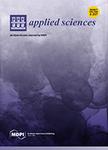版权所有:内蒙古大学图书馆 技术提供:维普资讯• 智图
内蒙古自治区呼和浩特市赛罕区大学西街235号 邮编: 010021

作者机构:Taiyuan Univ Technol Coll Civil Engn Taiyuan 030024 Peoples R China Shanxi Prov Transportat Technol Res & Dev CO LTD Transportat Ind Key Lab Highway Construct & Mainte Loess Area Taiyuan 030032 Peoples R China Cent South Univ Sch Resources & Safety Engn Changsha 410083 Peoples R China Taiyuan Univ Sci & Technol Coll Vehicle & Transportat Engn Taiyuan 030024 Peoples R China
出 版 物:《APPLIED SCIENCES-BASEL》 (Appl. Sci.)
年 卷 期:2025年第15卷第2期
页 面:686-686页
核心收录:
基 金:Fundamental Research Program of Shanxi Province National Natural Science Foundation of China (NSFC) Research Project of Science and Technology Department of Shanxi Province 202303021212078 202303021224001
主 题:rock-like material strain rate field damage evolution failure precursor particle flow code
摘 要:In rock engineering, it is crucial to collect and analyze precursor information of rock failure. This paper has attempted to study the strain rate field of rock-like material to obtain the precursor information of its failure. Based on the available laboratory experiments, the intact BPM (bonded-particle model) and other BPMs with a single open prefabricated flaw were simulated by PFC (Particle Flow Code). The volume strain rate field data before the peak stress have been obtained from two hundred measurement circles across each model. The strain rate field data have been firstly statistically analyzed to explore the failure precursor based on the intact model and 45 degrees flaw model and then compared to find the influence of the pre-existing flaw on the damage evolution and precursor signal. The results indicate that (1) all types of statistical data are positively correlated with the increment of microcracks;(2) corresponding to the fluctuation patterns of statistical data, the damage evolution of BPMs in the pre-peak stage can be divided into three parts;(3) the pre-existing flaw would accelerate the damage evolution;(4) the location and evolution rate of damage could be determined by comprehensively analyzing the average deviation curve, the coefficient of variation, and the contour maps of the strain rate field. These analyses of the particle displacement field can be used to distinguish the impacts of the flaw angle and provide some assistance for the failure forecast.